North America
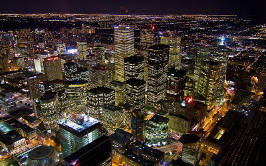
North America is the third largest continent, with a surface area of 24,221,490 sq km (9,351,969 sq miles). It is located in the northern hemisphere, between the Pacific Ocean and the Atlantic Ocean and to the north of South America. North America's highest point is Alaska's Mount McKinley, which rises to 6,194 m (20,320 ft) above sea level.
North America consists of three large nations and one large island territory that covers most of its area. They are Canada, the United States of America (USA), Mexico and Greenland. There are also seven smaller nations at its southern extreme (collectively known as Central America), around two dozen island nations and territories of various sizes in the Caribbean, and one isolated French territory off the Canadian Atlantic coast. Although the Central American and the Caribbean regions are technically part of the North American continent, they are commonly listed separately from their larger neighbors to the north and hence the distinctive region names for both cultural and geographical reasons.
Canada
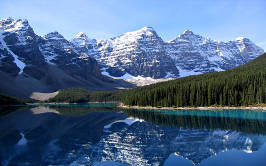
Canada is the second largest country in the world and the largest in North America. Renowned worldwide for its vast, untouched landscape, its unique blend of cultures and multifaceted history, Canada is a major tourist destination and one of the world's wealthiest countries.
Bear Watching, Whale Watching and Wildlife Viewing
In Manitoba, Churchill is known for its Polar Bears and Belugas and Riding Mountain National Park and adjacent Parkland area for its abundant population of Black Bears that vary in color from blond, cinnamon and chocolate to black. Riding Mountain National Park is known for its "watchable" wildlife.
Canada is a country with a rich cultural heritage. In Canada, festivals and events are held annually to celebrate the multicultural landscape of this great nation. Each festival represents a single cultural facet belonging to the diverse population of Canada. These festivals are easily identified by season.
Spring
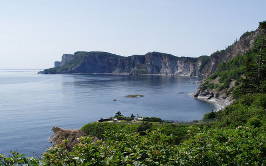
In some parts of the country, April and May mark the beginning of Canadian music festival season. Yellowknife in the Northwest Territories celebrates spring with the Cariblues Festival, Halifax showcases chamber music with the Scotia Festival of Music and Ottawa highlights concerts, flowers and history at the Canadian Tulip Festival.
Canada is also renowned the world over for its theatre festivals such as Ontario's Stratford Festival in beautiful Stratford Ontario and the Shaw Festival in scenic Niagara on the Lake, both of which begin at this time and continue through to the fall. There are also a number of children's festivals including the Calgary International Children's Festival and the annual Saskatchewan International Film Festival for Young People.
Summer
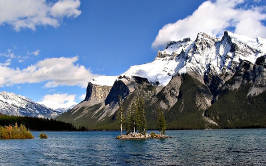
June 21 to July 1 marks 10 days of celebrations in Canada. The festivities begin on June 21 with National Aboriginal Day and celebrations across the country continue on June 24 with Saint-Jean-Baptiste Day, in honour of the patron saint of French Canadians, on June 27 with Canadian Multiculturalism Day, and culminate with Canada Day with parties everywhere on July 1st.
In addition, there are many musical and cultural summer festivals taking place across the country. Here is just a taste: Yellowknife’s Summer Solstice Festival, Calgary’s Reggaefest, Windsor's International Freedom Festival (with Detroit), the Calgary Stampede, Winnipeg’s Folklorama, Toronto’s Caribana, Les Francofolies de Montreal, as well as Montreal's Jazz and Comedy festivals, New Brunswick’s Festival acadien de Caraquet, London's Rib-fest, Bayfest in Sarnia, the Jazz and Blues Festival in Charlottetown, Prince Edward Island and the Collingwood Elvis Festival in Collingwood, Ontario. Edmonton is also known as the "Festival City" due to the large amount of festivals (such as North Americas largest Fringe Theatre festival).
Autumn
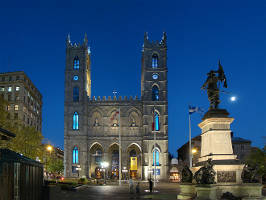
The autumn is traditionally a time for literary festivals and film festivals. Lovers of the written and spoken word may like the Trois-Rivières’ bilingual Festival International de la Poésie, Halifax’s Atlantic Canada Storytelling Festival, and Toronto’s International Festival of Authors. Film lovers can choose from the Toronto International Film Festival, the Vancouver International Film Festival, the Montreal World Film Festival, the Atlantic Film Festival, and St. John's International Women's Film Festival in Newfoundland, among many others.
Kitchener-Waterloo hosts the largest Oktoberfest celebration outside Bavaria. This nine-day festival features numerous cultural and entertainment activities. Many local venues are converted into biergartens (Beer Gardens) and take on Germanic names for the duration of the festival. Kitchener-Waterloo Oktoberfest attracts over 700,000 visitors annually.
Fall is also a time for families to enjoy the autumn splendour of nature in fall festivals or in simple activities where one enjoys the beautiful countryside.
Winter
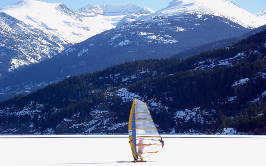
Winter is the time when Canadians and their families take to the slopes and hit the ice at ski resorts and community hockey rinks across the country. Canada’s world-famous winter festivals take place in late January and February including Carnaval de Québec in Quebec City and Winterlude/Bal de neige in Ottawa and Gatineau. There are also winter events that pay homage to Canada’s hardy pioneers such as the Festival du Voyageur in Winnipeg and the Yukon Sourdough Rendez-vous Festival set in Whitehorse.
In Calgary, the month of January is devoted to showcasing challenging national and international theatre, dance, and music in The High Performance Rodeo, one of Canada’s leading festivals of new and experimental theatre.
Especially popular in British Columbia, winter sports such as skiing and snowboarding are practiced and enjoyed regularly during the winter. British Columbia is home to many of the world's top ski resorts, including Whistler. The 2010 Winter Olympics and Paralympics took place in Whistler and Vancouver. Vancouverites can easily access smaller ski resorts, such as Cypress Mountain, Mount Seymour, and Grouse Mountain. This is typically a 15-30 minute drive from Downtown Vancouver.
Hawaii
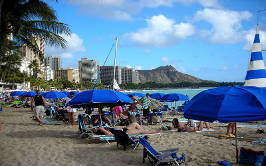
Hawaii (sometimes pronounced ha-VAI-ee by locals) is the 50th state of the United States of America. Situated nearly at the center of the north Pacific Ocean, Hawaii marks the northeast corner of Polynesia. While it was once a major hub for the whaling, sugar and pineapple industries, it is now economically dependent on tourism and the U.S. military. The natural beauty of the islands continues to be one of Hawaii's greatest assets. Honolulu is the state's capital, largest city, and cultural hub. Hawaiian and English are the official languages of Hawaii.
The Hawaiian islands offer a vast number of activities. Hiking and eco tours are popular on most islands, with opportunities for horseback riding, ATV, air tours, and other methods of exploring the landscape. Museums and historical sites such as Pearl Harbor are also to be found throughout the islands. Cultural activities such as the Polynesian Cultural Center on Oahu also make for interesting day-long activities.
Oahu is famous for Pearl Harbor tours, but also popular are Shark Snorkel dives in cages, Waikiki snorkel tours as well as around Oahu Tours where you will see all the major highlites of Oahu including Diamond Head, the North Shore and Dole Plantation where you can sample menu items made from fresh picked pineapples.
Maui is the location for Humpback Whale Watching from December 15 to April 15 each year as the massive Humpbacks migrate to Hawaii's warm waters to bear their calves. Also famous from Maui is the Molokini Crater which is a partially submerged volanco crater that you can snorkel at.
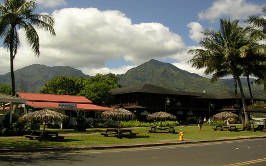
Kauai is untamed and beautiful. It has been featured in many major motion pictures over the past two decades. See this island by land or by air to take in the true beauty of this island.
This Big island is the volano island where you can take a land tour or fly over the incredible huge volanco on a helicopter tour. Doors off flights allow you to feel the heat from the volanco, and amazingly unique experience. Also on the Big Island you have the rare opportunity to swim with Wild dolphins, not capitve one.
Hawaii is best known for its beaches and water activities. Surfing is practically a religion in Hawaii, and scuba diving and snorkeling opportunities exist nearly everywhere. In addition, jet skiing, parasailing and kayaking are available in tourist areas.
United States of America
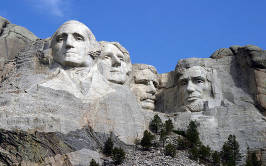
The United States of America is a large country in North America, often referred to as the "USA," the "U.S.," the "United States," "America," or simply "the States". It has a land area of about 9.6 million sq km (about half the size of Russia and about the same size as China). It also boasts the world's third largest population after China and India, with over 300 million people. It includes both densely-populated cities with sprawling suburbs, and vast, uninhabited and naturally beautiful areas. With its history of mass immigration dating from the 17th century, it is a "melting pot" of cultures from around the world.
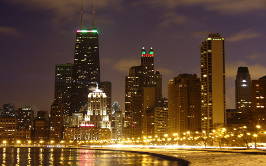
The country plays a dominant role in the world's cultural landscape, and is famous for its wide array of popular tourist destinations, ranging from the skyscrapers of Manhattan and Chicago, to the natural wonders of Yellowstone and Alaska, to the warm, sunny beaches of Florida, Hawaii and Southern California.
The United States is extraordinarily diverse in its array of attractions. You will never run out of things to see; even if you think you've exhausted what one place has to offer, the next destination is only a road trip away.
The Great American Road Trip is the most traditional way to see a variety of sights; just hop in the car and cruise down the Interstates, stopping at the convenient roadside hotels and restaurants as necessary, and stopping at every interesting tourist trap along the way, until you reach your destination.
Indescribably beautiful scenery, history that reads like a screenplay, entertainment options that can last you for days, and some of the world's greatest architecture—no matter what your pleasure, you can find it almost anywhere you look in the United States.
Natural scenery
From the spectacular glaciers of Alaska to the wooded, weathered peaks of Appalachia; from the otherworldly desertscapes of the Southwest to the vast waters of the Great Lakes; few other countries have as wide a variety of natural scenery as the United States does.
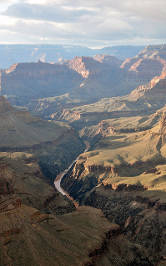
America's National Parks are a great place to start. Yellowstone National Park was the first true National Park in the world, and it remains one of the most famous, but there are 57 others. The Grand Canyon is possibly the world's most spectacular gorge; Sequoia National Park and Yosemite National Park are both home to the world's tallest living organisms; Glacier National Park is a great place to see huge sheets of ice; Canyonlands National Park could easily be mistaken for Mars; and the Great Smoky Mountains National Park features abundant wildlife among beautifully forested mountains. And the national parks aren't just for sightseeing, either; each has plenty of outdoors activities as well.
Still, the National Parks are just the beginning. The National Park Service also operates National Monuments, National Memorials, National Historic Sites, National Seashores, National Heritage Areas... the list goes on (and on). And each state has its own state parks that can be just as good as the federal versions. Most all of these destinations, federal or state, have an admission fee, but it all goes toward maintenance and operations of the parks, and the rewards are well worth it.
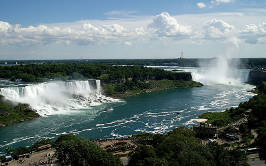
Those aren't your only options, though. Many of America's natural treasures can be seen without passing through admission gates. The world-famous Niagara Falls straddle the border between Canada and the U.S.; the American side lets you get right up next to the onrush and feel the power that has shaped the Niagara gorge. The "purple majesty" of the Rocky Mountains can be seen for hundreds of miles in any direction, while the placid coastal areas of the Midwest and the Mid-Atlantic have relaxed Americans for generations. And, although they are very different from each other, Hawaii and Alaska are perhaps the two most scenic states; they don't just have attractions—they are attractions.
Historical attractions
Americans often have a misconception of their country as having little history. The U.S. does indeed have a tremendous wealth of historical attractions—more than enough to fill months of history-centric touring.
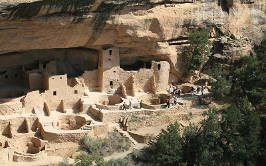
The prehistory of the continent can indeed be a little hard to uncover, as most of the Native American tribes did not build permanent settlements. But particularly in the West, you will find magnificent cliff dwellings at sites such as Mesa Verde, as well as near-ubiquitous rock paintings. The Museum of the American Indian in Washington, D.C. is another great place to start learning about America's culture before the arrival of European colonists.
As the first part of the country to be colonized by Europeans, the eastern states of New England, the Mid-Atlantic, and the South have more than their fair share of sites from early American history. The first successful British colony on the continent was at Jamestown, Virginia, although the settlement at Plymouth, Massachusetts, may loom larger in the nation's mind.
In the eighteenth century, major centers of commerce developed in Philadelphia and Boston, and as the colonies grew in size, wealth, and self-confidence, relations with Great Britain became strained, culminating in the Boston Tea Party and the ensuing Revolutionary War...
Monuments and architecture
Americans have never shied away from heroic feats of engineering, and many of them are among the country's biggest tourist attractions.
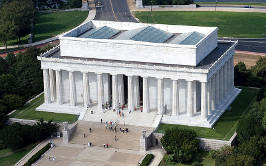
Washington, D.C., as the nation's capital, has more monuments and statuary than you could see in a day, but do be sure to visit the Washington Monument (the world's tallest obelisk), the stately Lincoln Memorial, and the incredibly moving Vietnam Veterans Memorial. The city's architecture is also an attraction—the Capitol Building and the White House are two of the most iconic buildings in the country and often serve to represent the whole nation to the world.
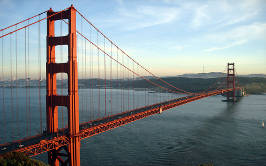
Actually, a number of American cities have world-renowned skylines, perhaps none moreso than the concrete canyons of Manhattan, part of New York City. The site of the destroyed World Trade Center towers remains a gaping wound in Manhattan's vista, but the Empire State Building and the Chrysler Building still stand tall, as they have for almost a century. Chicago, where the skyscraper was invented, is home to the country's single tallest building, the (former) Sears Tower, and an awful lot of other really tall buildings. Other skylines worth seeing include San Francisco (with the Golden Gate Bridge), Seattle (including the Space Needle), Miami, and Pittsburgh.
Some human constructions transcend skyline, though, and become iconic symbols in their own right. The Gateway Arch in St. Louis, the Statue of Liberty in Manhattan, the Hollywood Sign in Los Angeles, and even the fountains of the Bellagio casino in Las Vegas all draw visitors to their respective cities. Even the incredible Mount Rushmore, located far from any major city, still attracts two million visitors each year.
Museums and galleries
In the U.S., there's a museum for practically everything. From toys to priceless artifacts, from entertainment legends to dinosaur bones—nearly every city in the country has a museum worth visiting.
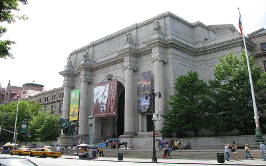
The highest concentrations of these museums are found in the largest cities, of course, but none compare to Washington, D.C., home to the Smithsonian Institution. With almost twenty independent museums, most of them located on the National Mall, the Smithsonian is the foremost curator of American history and achievement. The most popular of the Smithsonian museums are the National Air and Space Museum, the National Museum of American History, and the National Museum of Natural History, but any of the Smithsonian museums would be a great way to spend an afternoon
New York City also has an outstanding array of world-class museums, including the Guggenheim Museum, the American Museum of Natural History,the Museum of Modern Art (MOMA), the Metropolitan Museum of Art, the Intrepid Sea-Air-Space Museum, and the Ellis Island Immigration Museum.
